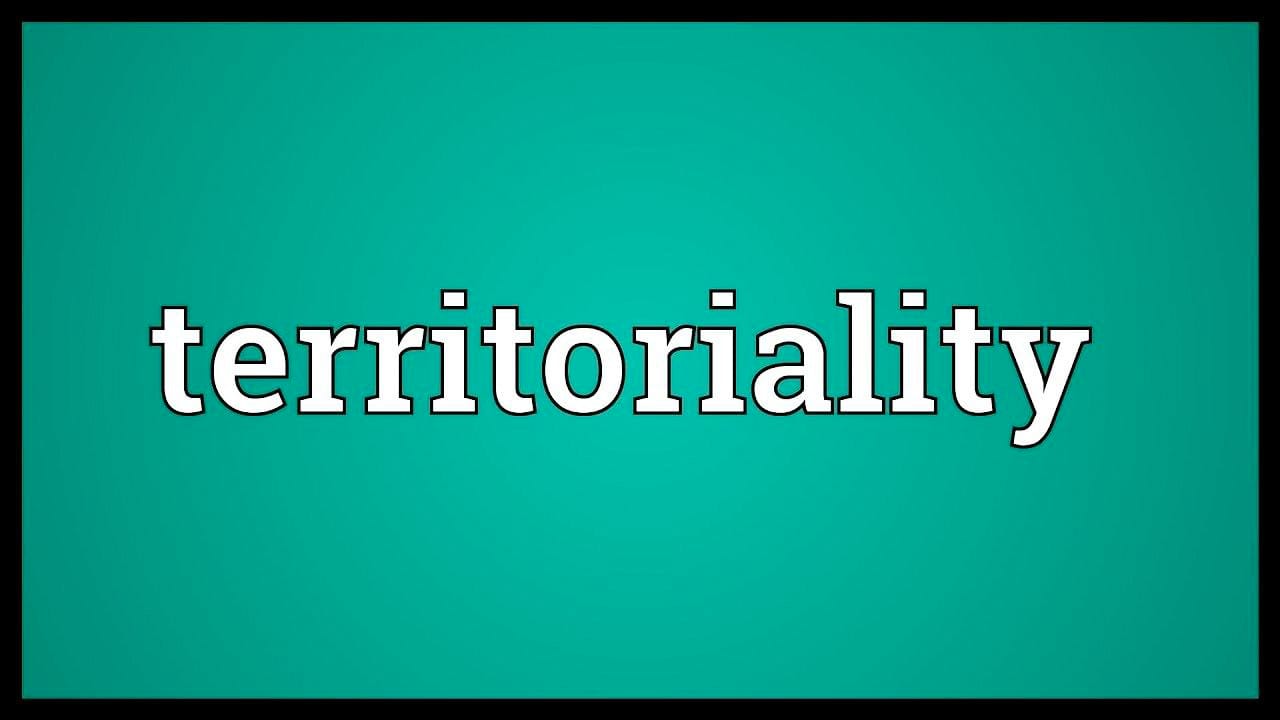Territoriality : Meaning & Chareteristic’s
Meaning of Territoriality:
Territoriality refers to the connection or association that a state, group, or individual has with a defined physical space or territory. It is the practice of claiming, controlling, or defending a specific area. Territoriality involves the assertion of rights over land or space and often entails the establishment of boundaries and the protection of these boundaries against outsiders.
In the context of states, territoriality is a fundamental principle of sovereignty, where the state exercises exclusive authority and control over its geographical area, including its land, airspace, and territorial waters.

Characteristics of Territoriality:
- Boundaries:
- Territoriality is often defined by clear, physical or legal boundaries that separate one territory from another. These boundaries can be natural (rivers, mountains) or artificial (political borders, fences).
- Example: National borders demarcating one country from another.
- Exclusivity of Control:
- Territoriality implies exclusive control over a specific area, where the state or group has the right to govern, make laws, and enforce them within that territory. No external power can exercise authority without permission.
- Example: A government’s exclusive authority to enforce laws within its national borders.
- Defensiveness:
- Territoriality involves protecting and defending the claimed space from outside interference or encroachment. States or groups may use force, diplomacy, or legal measures to protect their territory.
- Example: Military defense of a nation’s borders against invasion.
- Regulation of Access:
- Territoriality includes the ability to regulate who can enter, reside in, or use resources within the territory. This may involve immigration laws, property rights, or zoning regulations.
- Example: Immigration controls that determine who can enter or stay in a country.
- Resource Control:
- Control over resources found within the territory is a key aspect of territoriality. The governing authority has the right to exploit natural resources, such as minerals, water, and forests.
- Example: A state controlling the extraction and sale of oil within its territorial waters.
- Symbolism and Identity:
- Territories often hold symbolic meaning for states or groups, representing identity, culture, history, and a sense of belonging. Territoriality can foster nationalism or collective identity.
- Example: Jerusalem as a symbolically significant territory for multiple religious groups.
- Legitimacy and Recognition:
- For territorial control to be recognized internationally, other states and international bodies often need to acknowledge the authority of the territorial claimant. This recognition can be legal (through treaties) or de facto (through control without formal recognition).
- Example: International recognition of a country’s borders and government authority.
- Contested Nature:
- Territoriality can often lead to disputes, particularly when two or more groups claim the same territory or when boundaries are poorly defined. Territorial conflicts can arise between states, regions, or indigenous groups.
- Example: Disputed territories like Kashmir, where both India and Pakistan lay claim to the same land.
- Governance and Jurisdiction:
- Territoriality is linked to the ability to enforce legal and political jurisdiction over people and activities within the territory. The governing body has the authority to create laws, maintain order, and provide public services within its territorial limits.
- Example: Local governments implementing policies specific to a region within a state.
- Fixed and Fluid Nature:
- While territorial boundaries are often fixed, they can also be fluid due to changes caused by war, negotiation, natural shifts, or political agreements.
- Example: Boundary changes resulting from treaties or conflicts, like the shifting borders of European states after World War II.
Types of Territoriality:
- Personal Territoriality:
- Refers to the way individuals or groups assert control over personal or group space. This is often seen in social settings or interpersonal interactions.
- Example: A person’s home or office space where they feel they have control.
- State Territoriality:
- Refers to the control and governance that a nation-state exercises over its geographic area, including enforcing laws, managing resources, and defending borders.
- Example: The political and administrative control exercised by the government over the entire national territory.
- Ethnic or Cultural Territoriality:
- Some ethnic groups or communities may assert territoriality over regions that are historically or culturally significant to them, even within a larger state.
- Example: Indigenous peoples claiming ancestral lands.
- Economic Territoriality:
- Refers to control over economic activities or resources within a certain geographic area. This can be at the national or local level.
- Example: Exclusive Economic Zones (EEZ) where states control resource extraction within a certain distance from their shores.
Territoriality is a critical concept in both international relations and everyday social interactions, shaping how states, groups, and individuals organize space, enforce control, and manage conflicts.
Share this content:



Leave a Reply